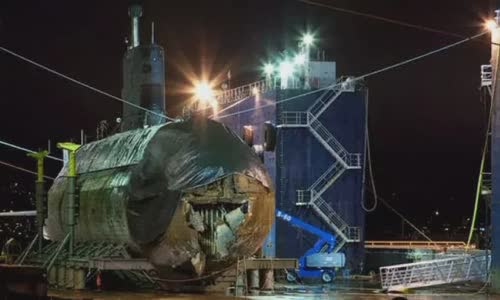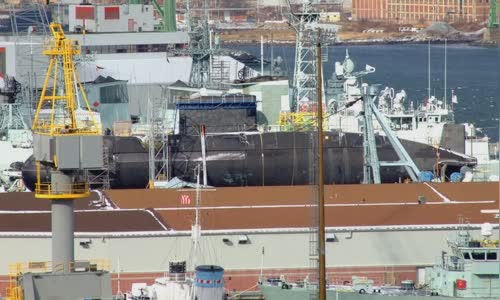The Canadan Navy owns a fleet of four Victorian-class submarines, but they constantly have "bad luck" incidents and spend most of their time in port.
The Canadian Department of Defense announced on December 21 that the HMCS Corner Brook submarine was leaking water due to the technician's failure to comply with the ballast tank discharge procedure during a test at the Victorian shipyard in March.
The problem with HMCS Corner Brook also reflects the disappointing service of four Victorian-class ships, the only submarine fleet on the Canadian navy today.
HMCS Corner Brook has been almost completely shut down since the seabed collision, causing its nose to tear almost 2 m during a maneuver off the coast of Vancouver in 2011. Canadian Navy investigation
The vessel was put into long-term maintenance dock since mid-2014, a process expected to take six years.
The performance status of the remaining three aircraft is also not better.
The Victorian class was originally named Upholder, developed by Britain in the late 1970s and built in the 1980s. London originally planned to build 12, but the plan was canceled when only 4 ships were shipped, they were
However, all four ships were disbanded in 1994 after the British Navy decided to operate only nuclear submarines.

HMCS Corner Brook in the factory after the 2011 seabed collision Photo: CBC
The British government then approved the transfer of all four submarines to Canada in the form of lease to own in 1988. Under the agreement, Canadian officials will pay $ 427 million for rent for eight years, after which London will
The deal also involves a bilateral agreement that allows the British military to continue using some bases in Canada.
The first submarine changed its name from HMS Unseen to HMCS Victoria, and entered service with the Canadian navy in 2000. Subsequent ships included HMCS Windsor and 2003 HMCS Corner Brook.
The last one, HMCS Chicoutimi, was spilled into the control tower by seawater while traveling from England to Canada in 2004. The incident caused a fire and a complete power outage, causing the ship to lose control and drift on the sea, a water.
Naval vessels and tugboats were deployed to save Chicoutimi, return her to British ports for repairs and were only moved to Canada a year later.
In addition to the cost of hiring ships, Canada also has to pay an additional $ 98 million to overhaul four ships that have been built for many years.

HMS Chicoutimi was located in a maintenance port in 2007 Photo: Wikipedia
Overhaul and maintenance also caused a series of problems with the Victora-class submarine fleet.
The Canadian Navy also found poor quality welds on all four ships, a problem that had stuck with the Victorian class for many years.
HMCS Victoria went to sea for a total of 115 days between 2000 and 2010, while HMCS Corner Brook left port only 81 days in 2006-2008.
Ottawa plans to return the three ships to service this year, but plans were also delayed by Covid-19.
The fate of the Victorian class is currently unknown, although the first one is expected to end its service life in 2022. The Government of Canada has planned to increase the shelf life of all four ships since 2017, but has not yet approved.
Many experts believe that Canada should order new submarines, instead of spending extra money to repair and maintain Victorian class operations.
"The Canadian Navy needs submarines, but the effort to keep the Victorians in service for many more years, especially as they spend most of their time in port, will be increasingly ineffective," said the expert.



 Connie McCord Determan
Connie McCord Determan







